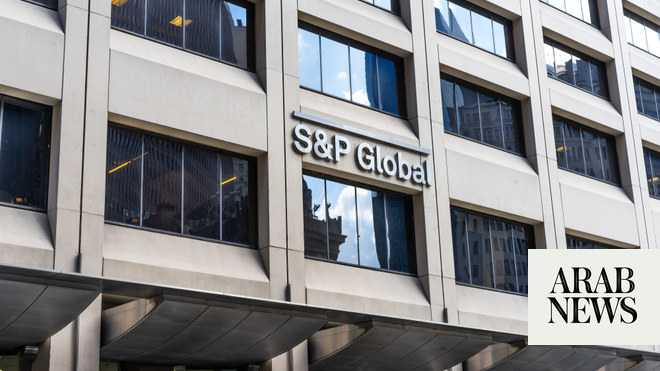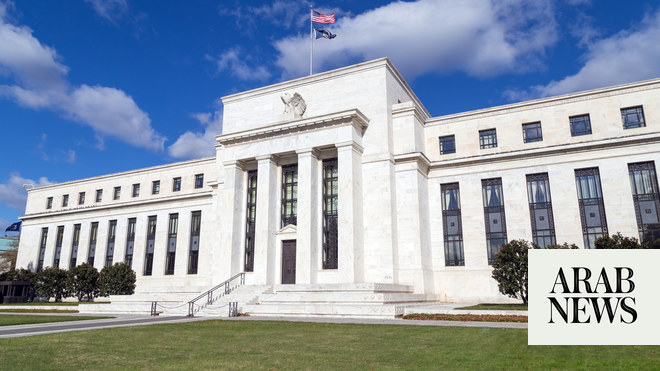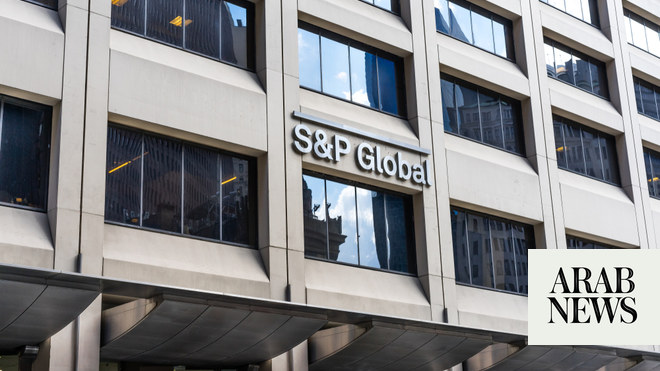
S&P Global predicts a manageable impact on bank margins
GCC banking sector’s strong efficiency provides solid foundation for continued growth and resilience through 2025
RIYADH: Banks in the Gulf Cooperation Council region are expected to maintain strong asset quality, profitability, and ample liquidity through 2025, according to a new report by S&P Global.
The global credit rating agency highlighted the robust performance of the region’s banking sector, which it attributes to solid capitalization and well-managed balance sheets, despite potential challenges from lower interest rates.
S&P Global said that while the outlook for GCC banks remains positive, heightened geopolitical risks or a sharp drop in oil prices could pose threats to their creditworthiness. However, the agency added that the banks are likely to demonstrate resilience in the face of such adverse scenarios, reflected in their currently high ratings.
The report forecasts that Brent crude oil will average $75 per barrel from the fourth quarter of the year through 2027, supporting GCC economies.
“In our view, GCC countries will also benefit from the implementation of economic transformation projects (in Saudi Arabia), the expansion of gas production (in Qatar), reform implementations (in Bahrain and Oman), and the non-oil economy’s good performance (in Bahrain and the UAE),” the report said.
Despite expected interest rate cuts by the US Federal Reserve, and mirrored reductions by GCC central banks, S&P Global predicts a manageable impact on bank margins.
The decline in rates could reduce funding costs and mitigate unrealized losses in securities portfolios, with an estimated margin impact ranging from 20-60 basis points, depending on the country.
GCC banks maintain strong capitalization levels, which continue to underpin their overall creditworthiness, according to the report.
Shareholder support has been a key factor, with dividend payouts generally below 50 percent, allowing banks to retain profits and stabilize their capital positions.
The quality of capital remains robust, with limited reliance on hybrid instruments. However, S&P Global anticipates an increase in hybrid issuance by GCC banks over 2025-2026, as institutions seek to take advantage of lower interest rates and address the first call dates of previously issued instruments.
“GCC banks are mainly funded by domestic deposits, which have proved stable through periods of mild stress, such as the COVID-19 pandemic and previous instances of geopolitical risk,” the report added.
It also outlined potential risks stemming from ongoing regional conflicts.
S&P Global conducted stress tests on GCC banks, analyzing scenarios ranging from modest to severe geopolitical escalations.
In severe cases, involving broader regional conflict and disruptions to trade routes, the impact could extend to energy prices and macroeconomic stability, affecting both sovereign and banking sector credit metrics.
S&P Global said despite these challenges, the GCC banking sector’s strong efficiency, driven by low labor costs and increasing digitalization, provides a solid foundation for continued growth and resilience through 2025.












